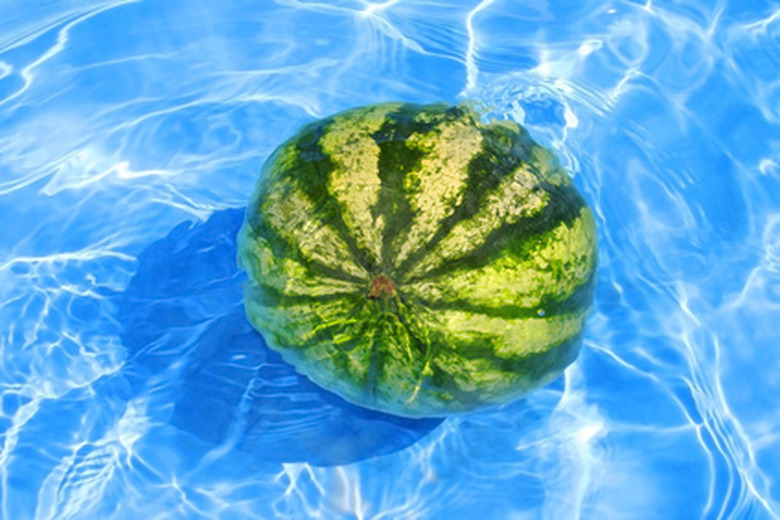How To Increase The Density Of Water
One of the most important and unusual characteristics of water is how temperature effects its density. Unlike most substances, which continually become more dense as they get colder, water achieves its maximum density at 4 degrees Celsius (39.2 degrees Fahrenheit). As water drops below that temperature, it becomes less dense, which is why ice floats. That may seem unremarkable at first, but this unique quality of water keeps lakes and oceans from freezing solid or raising water to catastrophic levels.
You can use this density variation in water to increase its density. However, temperature fluctuates naturally, so if you wish to increase the density permanently, you can add salt to the water. This increases the water's mass without increasing its volume. Thus, its density increases.
Using Temperature
Step 1
Measure the temperature of the water by placing the metallic tip of the thermometer in the water.
Step 2
Place the container of water in the freezer if the water temperature was greater than 39.2 degrees Fahrenheit (4 degrees Celsius). If it was lower than that, you can leave it out at room temperature, or microwave it for a short time, to raise it.
Step 3
Check the water's temperature periodically. Remove the container from the freezer or microwave when it reaches around 39.2 degrees Fahrenheit. At this point it will be at the maximum density for pure water.
Using Salt
Step 1
Pour approximately 4 tbsp of salt into a cup of water. If you need to increase the density of a greater volume of water, use proportionally more salt.
Step 2
Stir thoroughly until the salt completely dissolves in the water.
Step 3
Pour the salt water through a paper towel into another container. This will remove any undissolved salt particles and keep the volume the same as before. Since you have added mass without increasing volume, the density of the salt water is greater than the pure water with which you started.
Things Needed
- Container
- Freezer
- Salt
- Thermometer
Cite This Article
MLA
Taylor, C.. "How To Increase The Density Of Water" sciencing.com, https://www.sciencing.com/increase-density-water-7804294/. 24 April 2017.
APA
Taylor, C.. (2017, April 24). How To Increase The Density Of Water. sciencing.com. Retrieved from https://www.sciencing.com/increase-density-water-7804294/
Chicago
Taylor, C.. How To Increase The Density Of Water last modified March 24, 2022. https://www.sciencing.com/increase-density-water-7804294/
